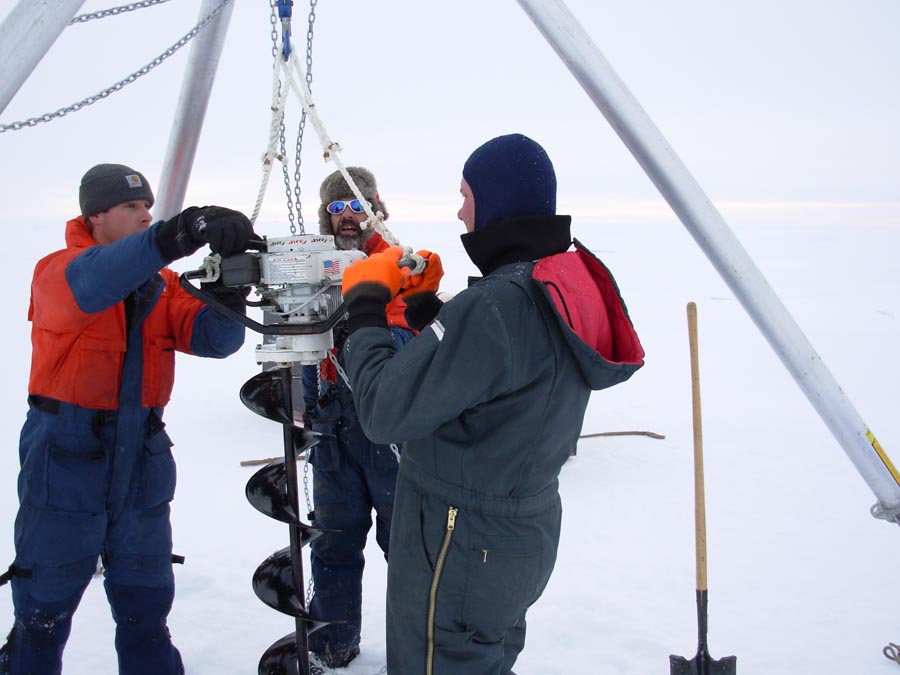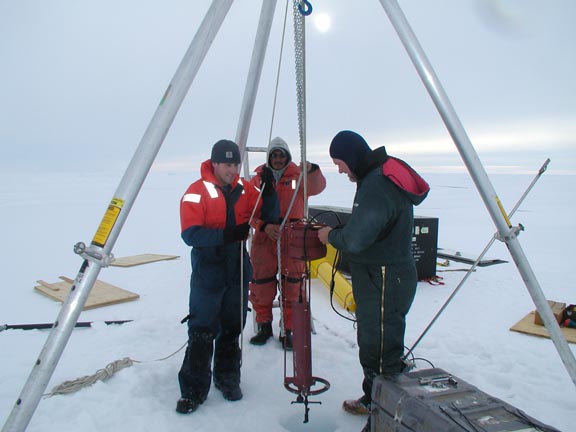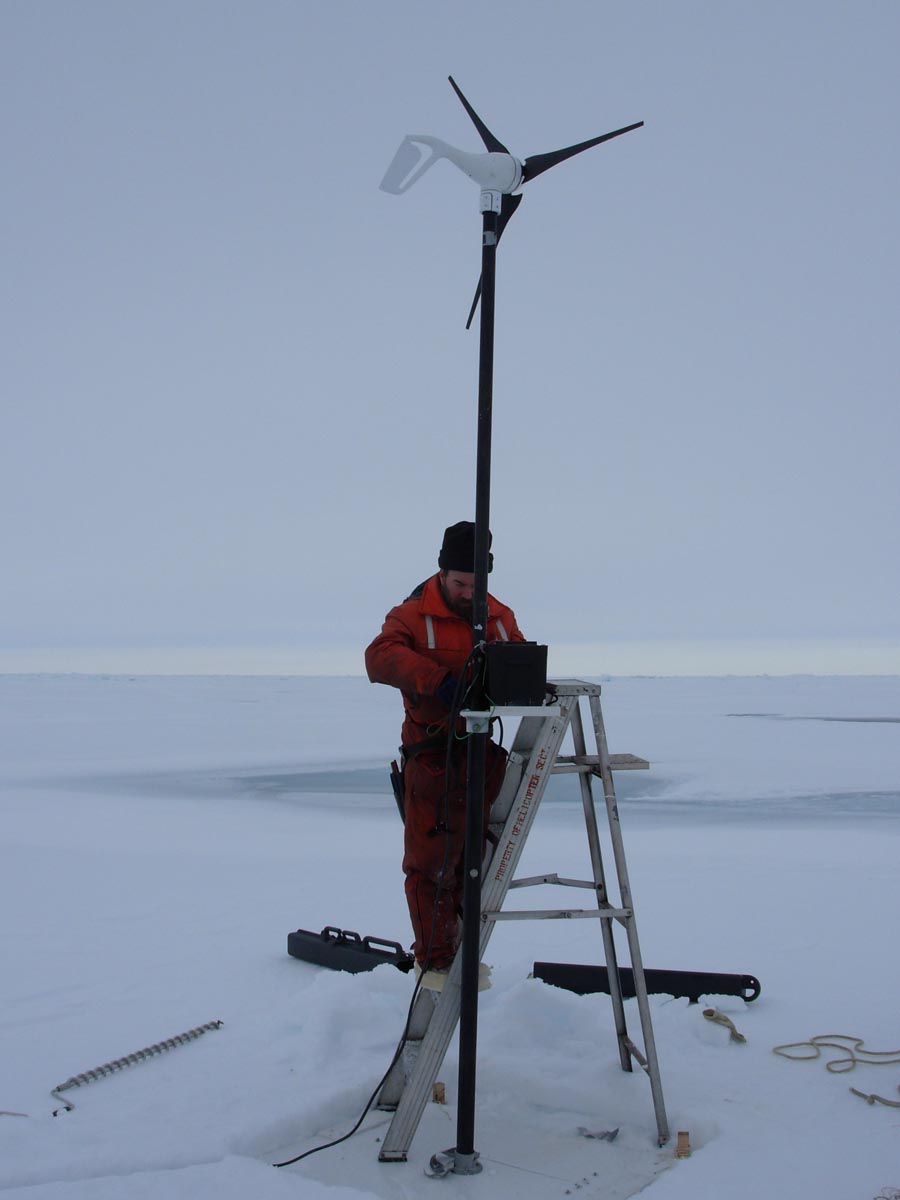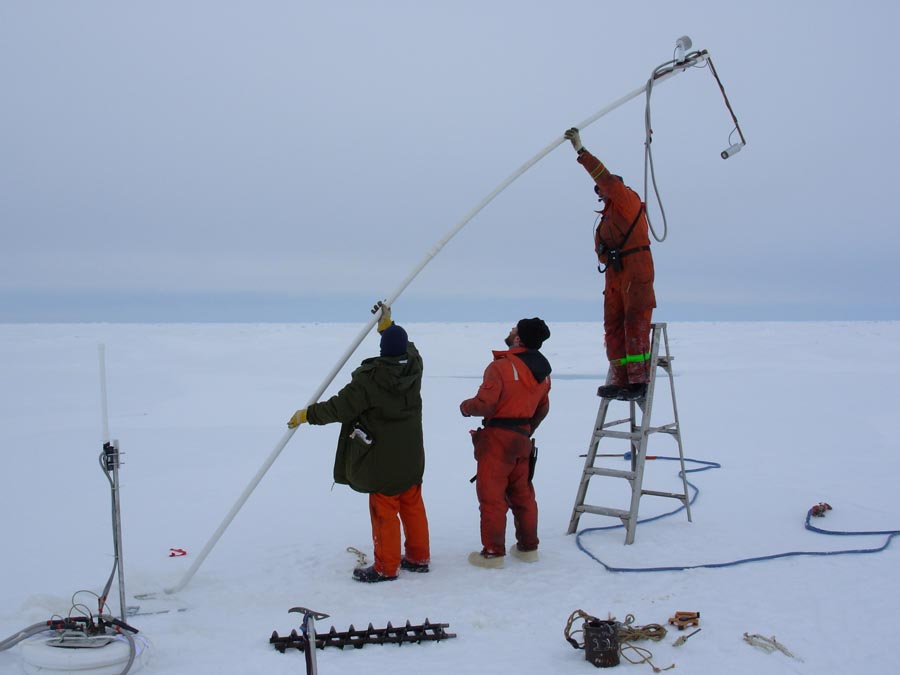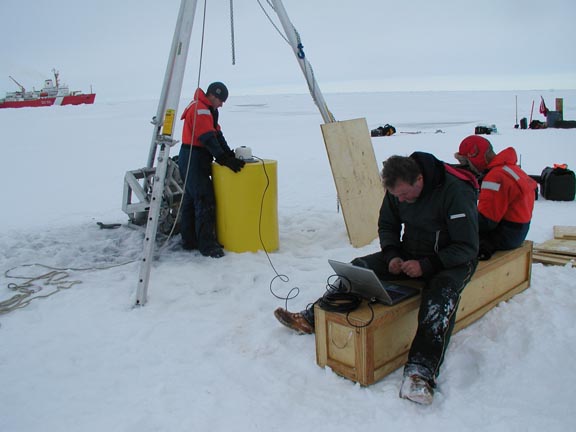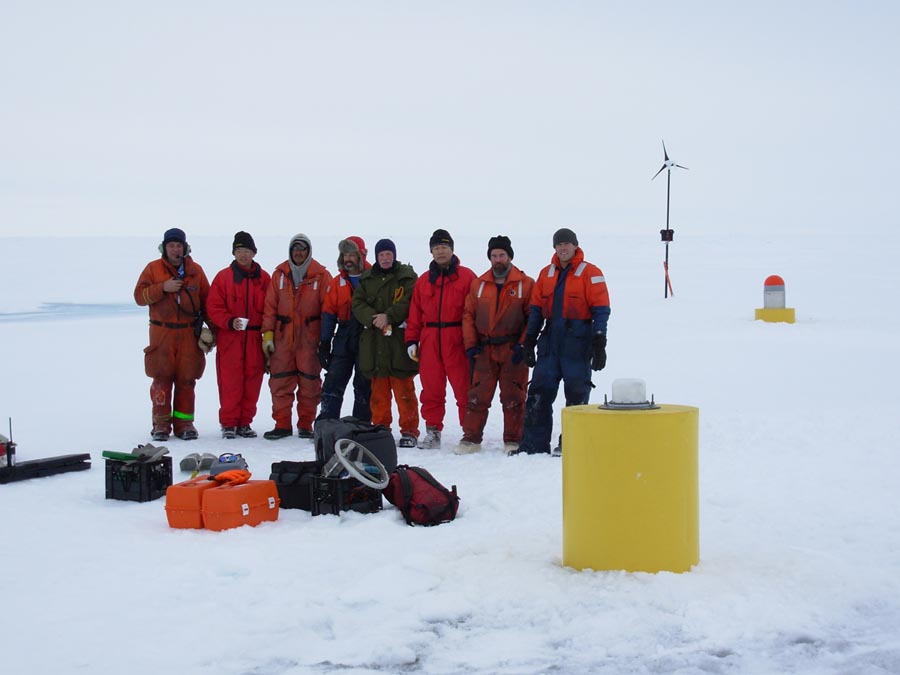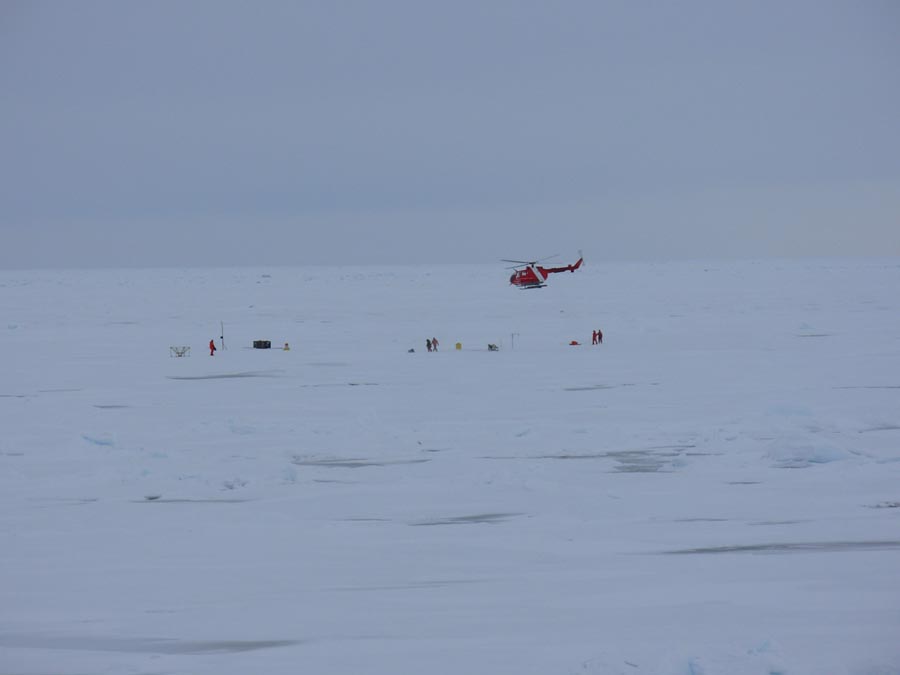ITP 6 Deployment Operations
The Arctic scientific community has coined the acronym Ice-Based Observatory (or IBO) to signify a cluster of ice-tethered measuring devices deployed and drifting with sea ice to monitor numerous environmental properties in the air, ice, and ocean (see IBO workshop report). IBOs are just one of the technologies that are contributing to the Arctic Observing Network to provide environmental data from this remote region for scientific and operational purposes. An array of IBOs would observe the weather of the ocean for operational purposes and provide unique valuable climate data.
On this Labor Day holiday in Canada and the US, an IBO consisting of an ITP, an Ice Mass Balance buoy (IMB), and an Arctic Ocean Flux Buoy (AOFB) was deployed in the traditional center of the Beaufort Gyre with a ring of six GPS (Global Positioning System) drifters in a 10 mile radius around the site to study ice deformation. The IMB measures the temperature profile through the ice, ice thickness, snow depth, air temperature and barometric pressure. Generally speaking, the data determines "mass balance" from the difference in the growth and ablation (melt) rates at the top and bottom of the ice floe. The AOFB measures the flux of the heat to the bottom of the ice floe from the perspective of the upper ocean immediately below the ice floe. The ITP measures the seawater properties to a depth of 750 m. All of these systems are designed to last for several years (or as long as the ice allows). Combined, this IBO provides time series of profiles of the near surface atmosphere, ice, and seawater in all seasons while drifting with the sea ice. These data are transmitted via satellites in near real time to our laboratories, and are being shared amongst the scientific community to better understand the mechanisms regulating the Arctic climate.
Helicopter operations began after breakfast with a helicopter reconnaissance for an appropriate ice floe to accommodate the needs of all three buoys. A 3 m thick (10 ft) relatively flat ice floe with old ridges around the edges was selected. In addition to the WHOI mooring team, Mike Dempsey (Oceanetic Measurement), Gary Morgan, Bill May, and Joe Illasiak participated on the deployments. Numerous 10", 4" and 2" diameter holes were bored through the ice to deploy the buoys. A tripod was set up to provide the mechanical advantage needed to manipulate the ITP and AOFB buoys, while the IMB could be installed by hand. The AOFB was operational first, then there was a short break for box lunches provided by the galley, then the IMB was completed, and finally the ITP was in place. While the work site was tidied and the ice party transported back to the ship, Jennifer Hutchings and Pat McKeown arrived to install a radar reflector near the buoy array.
More information and photos on the deployment operation are also available at: https://www.whoi.edu/page.do?pid=67996.
